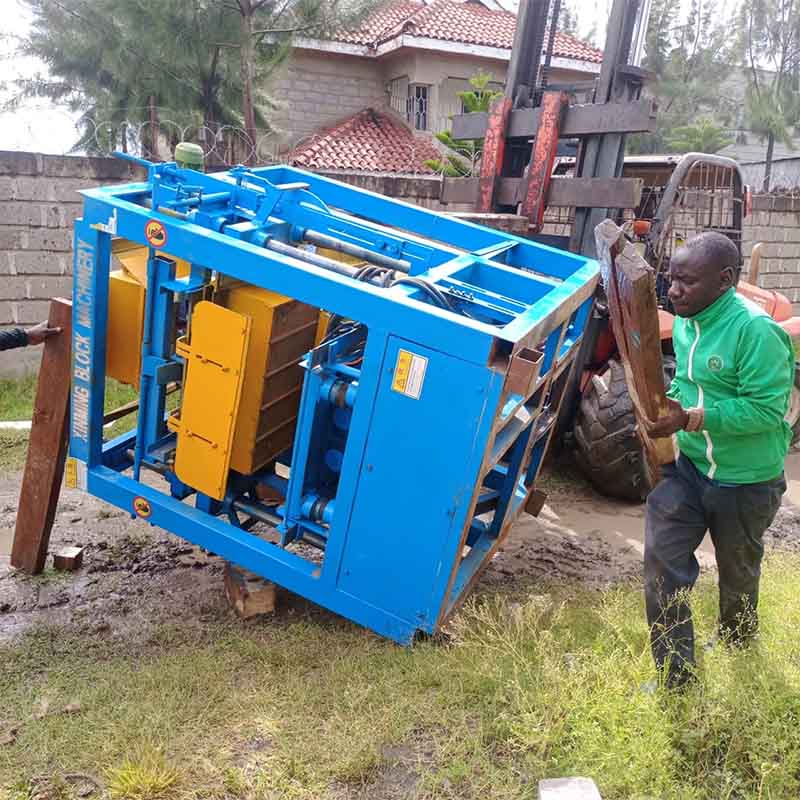
The art of brick making has been a cornerstone of human civilization for millennia, shaping our cities, homes, and infrastructure.
However, in today’s rapidly evolving technological landscape, traditional brick making is undergoing a remarkable transformation.
Advanced brick making technology is revolutionizing the way bricks are produced, offering a range of benefits that extend beyond the construction site.
This essay delves into the power of advanced brick making technology, exploring its innovative features, multifaceted advantages, potential challenges, and the broader implications for the construction industry and beyond.
Innovative Features: Unveiling the Technological Marvels
Advanced brick making technology represents a fusion of engineering ingenuity and cutting-edge innovations.
These modern machines leverage a combination of robotics, automation, and smart controls to optimize the brick manufacturing process.
At the core of this technology is the introduction of precise raw material mixing and compaction mechanisms.
Automated systems ensure consistent proportions of clay, binders, and additives, leading to enhanced material quality and structural integrity.
Furthermore, these machines utilize state-of-the-art molding techniques, such as hydraulic or pneumatic presses, to shape bricks with impeccable precision.
The integration of 3D scanning and modeling technology allows for the creation of intricate and customizable brick designs, enabling architects to unleash their creativity and envision novel building aesthetics.
Multifaceted Advantages: Transforming Building Solutions
The adoption of advanced brick making technology offers a multitude of advantages that extend far beyond the realm of construction.
Foremost among these benefits is the drastic reduction in production time.
Traditional brick making methods involved labor-intensive processes and extended curing periods.
In contrast, advanced technology enables continuous and automated production, significantly shortening brick manufacturing timelines.
This efficiency boost translates to faster project completion and reduced construction costs.
Moreover, the precision achieved by advanced brick making technology results in bricks with consistent dimensions, shapes, and textures.
This uniformity enhances the structural integrity of buildings and simplifies the construction process, as builders can rely on predictable brick characteristics.
Additionally, the high quality of these bricks leads to aesthetically pleasing structures that stand the test of time, reducing the need for frequent maintenance and repairs.
Furthermore, the incorporation of smart controls and monitoring systems in these machines improves resource management.
Real-time data analysis optimizes energy consumption, raw material usage, and waste reduction.
This efficiency not only contributes to cost savings but also aligns with sustainability goals, addressing environmental concerns associated with traditional brick production.
Navigating Challenges: Overcoming Barriers to Adoption
While the potential benefits of advanced brick making technology are compelling, certain challenges must be addressed to ensure widespread adoption.
One significant obstacle is the initial investment cost.
Acquiring and implementing these high-tech machines can be financially burdensome for some construction firms, particularly smaller enterprises with limited resources.
Encouraging adoption may require financial incentives, subsidies, or leasing options to make this technology accessible to a broader range of stakeholders.
Additionally, the industry’s readiness to embrace new technology and adapt to change plays a pivotal role.
Training the workforce to operate, maintain, and troubleshoot these advanced machines is crucial for their effective utilization.
Workforce development programs, collaborations with educational institutions, and on-site training initiatives are essential to equip construction professionals with the skills required to harness the full potential of advanced brick making technology.
Shaping the Future: A Paradigm Shift in Construction
The integration of advanced brick making technology heralds a paradigm shift in the construction industry.
Beyond its immediate benefits, this technology has the potential to reshape construction practices, foster innovation, and drive economic growth.
By streamlining brick production, construction projects can be executed more efficiently, reducing overall project timelines and costs.
This efficiency, coupled with enhanced brick quality, translates to safer, more durable, and aesthetically pleasing structures that contribute to the built environment.
Furthermore, the adoption of advanced brick making technology aligns with broader industry trends towards sustainable and eco-friendly practices.
The optimization of resource utilization, energy efficiency, and waste reduction is in line with global efforts to create more resilient and environmentally conscious cities.
As governments, organizations, and communities increasingly prioritize sustainable development, advanced brick making technology offers a tangible solution to align construction practices with these goals.
In conclusion, the emergence of advanced brick making technology represents a transformative leap forward for the construction industry.
By harnessing the power of robotics, automation, and smart controls, this technology streamlines brick production, enhances structural integrity, and accelerates project timelines.
The precision and efficiency offered by these machines pave the way for innovative architectural designs and sustainable building solutions.
While challenges related to cost and workforce adaptation must be addressed, the potential benefits in terms of construction efficiency, quality enhancement, and environmental responsibility make the adoption of advanced brick making technology a compelling proposition.
As technology continues to shape industries, advanced brick making technology stands as a testament to the capacity of innovation to drive positive change in the construction landscape.
With this technology at the forefront, from clay to construction, the future of building is poised for a remarkable transformation.
